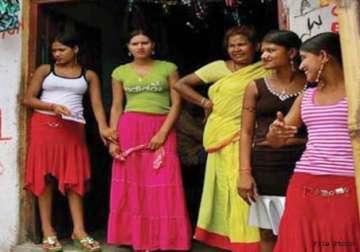Kolkata: One of Asia's largest red light districts, Sonagachi will next month roll out an experimental project for providing HIV-preventive medicine to sex workers in what will be the first such initiative in the country.
The feasibility project recently received clearance from the National AIDS Control Organisation (NACO) and Union Health Ministry and is likely to commence in December.
“We recently gave clearance to this project. It is a feasibility project. It is for the first time that such a project is being taken up in India,” national programme officer at NACO, BB Rewari, told PTI.
Under the project, ‘Pre-Exposure Prophylaxis' (PrEP), regular medicine would be given to an HIV-negative sex worker who engages sexually with an HIV-positive person, said a senior official of an NGO working for the welfare of sex workers.
The medicine is designed to prevent sex workers from HIV infection, said Samarjit Jana principal of the NGO, Sonagachi Research and Training Institute (SRTI). “We have already started survey of HIV-positive and HIV-negative sex workers in Sonagachi. We hope the project will start from December this year,” Jana said. The project is to be financed by the Melinda Gates Foundation.
SRTI is an arm of the Durbar Mahila Samanwaya Committee (DMSC), a forum of 1,30,000 sex-workers in West Bengal. According to Protim Roy, a doctor associated with the project, an awareness drive for the campaign has already been taken up among the sex workers.
Jana said that the use of condoms and taking PrEP medicine everyday would offer double protection against HIV infection.
“We all know that use of condoms has brought down the prevalence of HIV, but often customers do not use condoms. In such cases and in cases of defective condoms, the virus can infect a person. This can be prevented by regular intake of such a medicine,” he explained.
Rewari agreed that PrEP has the potential to bring down the HIV risk factor by 60-70 per cent among high-risk groups such as sex-workers.
The initiative, meanwhile, was welcomed by the AIDS Society of India, which felt that the feasibility project could be made part of a policy to prevent AIDS.
“It will surely help bring down AIDS prevalence among those who are in the high-risk zones. The government needs to move step by step. The feasibility project could soon turn into a policy to prevent AIDS, given that the PrEP Medicine is very cheap,” said President of AIDS Society of India, IS Gilada.
Rewari, however, pointed out that some factors need to be considered, such as its acceptability in society, especially among sex workers. He added that the medicine along with the use of condoms had been very successful abroad in preventing HIV infection.
According to Jana, the project will be a two-year one to be implemented after identifying the HIV-negative sex-workers at Sonagachi.
“First, of the nearly 20,000 sex workers at Sonagachi, we will select 1,000 who do not have HIV virus. A counselling class will be undertaken for them to inform them of the efficacy of PrEP. Presently an awareness programme is on,” he said.
The selected sex workers would undergo blood tests every three months to ascertain their HIV status, Jana said, adding that after two years a report would be published on the project.
Latest India News
